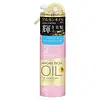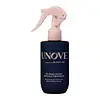What's inside
What's inside
 Key Ingredients
Key Ingredients

No key ingredients
 Benefits
Benefits

 Concerns
Concerns

 Ingredients Side-by-side
Ingredients Side-by-side

Water
Skin ConditioningAlcohol
AntimicrobialAmodimethicone
PEG-50 Hydrogenated Castor Oil
EmulsifyingGlycerin
HumectantParfum
MaskingPalmitamidopropyltrimonium Chloride
C12-14 Pareth-5
CleansingC12-14 Pareth-7
EmulsifyingPropylene Glycol
HumectantC12-14 Pareth-12
EmulsifyingStyrene/Vp Copolymer
Ethylhexyl Methoxycinnamate
UV AbsorberArgania Spinosa Kernel Oil
EmollientPhytosteryl/Octyldodecyl Lauroyl Glutamate
Skin ConditioningWater, Alcohol, Amodimethicone, PEG-50 Hydrogenated Castor Oil, Glycerin, Parfum, Palmitamidopropyltrimonium Chloride, C12-14 Pareth-5, C12-14 Pareth-7, Propylene Glycol, C12-14 Pareth-12, Styrene/Vp Copolymer, Ethylhexyl Methoxycinnamate, Argania Spinosa Kernel Oil, Phytosteryl/Octyldodecyl Lauroyl Glutamate
Cyclopentasiloxane
EmollientDisiloxane
Skin ConditioningDimethicone
EmollientC12-15 Alkyl Benzoate
AntimicrobialDiphenylsiloxy Phenyl Trimethicone
Skin ConditioningParfum
MaskingHexyl Cinnamal
PerfumingGeraniol
PerfumingCitronellol
PerfumingLimonene
PerfumingAlpha-Isomethyl Ionone
PerfumingCamellia Seed Oil
Macadamia Ternifolia Seed Oil
EmollientArgania Spinosa Kernel Oil
EmollientOlea Europaea Fruit Oil
MaskingHelianthus Annuus Seed Oil
EmollientWater
Skin ConditioningButylene Glycol
HumectantHydrolyzed Silk
HumectantHydrolyzed Keratin
HumectantMacrocystis Pyrifera Extract
Skin ConditioningHydrolyzed Corn Protein
Skin ConditioningHydrolyzed Soy Protein
HumectantHydrolyzed Extensin
Skin ConditioningHydrolyzed Rice Protein
Skin ConditioningHydrolyzed Potato Protein
Skin Conditioning1,2-Hexanediol
Skin ConditioningSoluble Collagen
HumectantSilk Amino Acids
HumectantGlycine
BufferingSerine
MaskingGlutamic Acid
HumectantAspartic Acid
MaskingCaprylic/Capric Triglyceride
MaskingLeucine
Skin ConditioningAlanine
MaskingLysine
Skin ConditioningArginine
MaskingTyrosine
MaskingPhenylalanine
MaskingThreonine
Proline
Skin ConditioningValine
MaskingIsoleucine
Skin ConditioningPhosphatidylcholine
EmulsifyingHistidine
HumectantMethionine
Skin ConditioningCysteine
AntioxidantCeramide NP
Skin ConditioningCyclopentasiloxane, Disiloxane, Dimethicone, C12-15 Alkyl Benzoate, Diphenylsiloxy Phenyl Trimethicone, Parfum, Hexyl Cinnamal, Geraniol, Citronellol, Limonene, Alpha-Isomethyl Ionone, Camellia Seed Oil, Macadamia Ternifolia Seed Oil, Argania Spinosa Kernel Oil, Olea Europaea Fruit Oil, Helianthus Annuus Seed Oil, Water, Butylene Glycol, Hydrolyzed Silk, Hydrolyzed Keratin, Macrocystis Pyrifera Extract, Hydrolyzed Corn Protein, Hydrolyzed Soy Protein, Hydrolyzed Extensin, Hydrolyzed Rice Protein, Hydrolyzed Potato Protein, 1,2-Hexanediol, Soluble Collagen, Silk Amino Acids, Glycine, Serine, Glutamic Acid, Aspartic Acid, Caprylic/Capric Triglyceride, Leucine, Alanine, Lysine, Arginine, Tyrosine, Phenylalanine, Threonine, Proline, Valine, Isoleucine, Phosphatidylcholine, Histidine, Methionine, Cysteine, Ceramide NP
Ingredients Explained
These ingredients are found in both products.
Ingredients higher up in an ingredient list are typically present in a larger amount.
You may know this ingredient as argan oil. Argan Oil has antioxidant, hydrating, and soothing properties.
Studies have shown argan oil can help fight again radical damage from the sun. This makes it effective at preventing hyperpigmentation.
Large amounts of vitamin E found in argan oil helps the skin retain water. Argan oil also contains fatty acids such as linoleic acid, oleic acid, and palmitic acid. It is also a good source of lipids.
Another benefit of argan oil is skin-soothing. It can help reduce inflammation-related skin symptoms.
Argan Oil is effective at regulating sebum production in pores. This can make it effective at treating hormonal acne.
Traditionally, argan oil was used for its antibacterial and antifungal properties. However, argan oil contains fatty acids that may make it not fungal-acne safe.
Argan Trees are native to Morocco.
Learn more about Argania Spinosa Kernel OilParfum is a catch-all term for an ingredient or more that is used to give a scent to products.
Also called "fragrance", this ingredient can be a blend of hundreds of chemicals or plant oils. This means every product with "fragrance" or "parfum" in the ingredients list is a different mixture.
For instance, Habanolide is a proprietary trade name for a specific aroma chemical. When used as a fragrance ingredient in cosmetics, most aroma chemicals fall under the broad labeling category of “FRAGRANCE” or “PARFUM” according to EU and US regulations.
The term 'parfum' or 'fragrance' is not regulated in many countries. In many cases, it is up to the brand to define this term.
For instance, many brands choose to label themselves as "fragrance-free" because they are not using synthetic fragrances. However, their products may still contain ingredients such as essential oils that are considered a fragrance by INCI standards.
One example is Calendula flower extract. Calendula is an essential oil that still imparts a scent or 'fragrance'.
Depending on the blend, the ingredients in the mixture can cause allergies and sensitivities on the skin. Some ingredients that are known EU allergens include linalool and citronellol.
Parfum can also be used to mask or cover an unpleasant scent.
The bottom line is: not all fragrances/parfum/ingredients are created equally. If you are worried about fragrances, we recommend taking a closer look at an ingredient. And of course, we always recommend speaking with a professional.
Learn more about ParfumWater. It's the most common cosmetic ingredient of all. You'll usually see it at the top of ingredient lists, meaning that it makes up the largest part of the product.
So why is it so popular? Water most often acts as a solvent - this means that it helps dissolve other ingredients into the formulation.
You'll also recognize water as that liquid we all need to stay alive. If you see this, drink a glass of water. Stay hydrated!
Learn more about Water